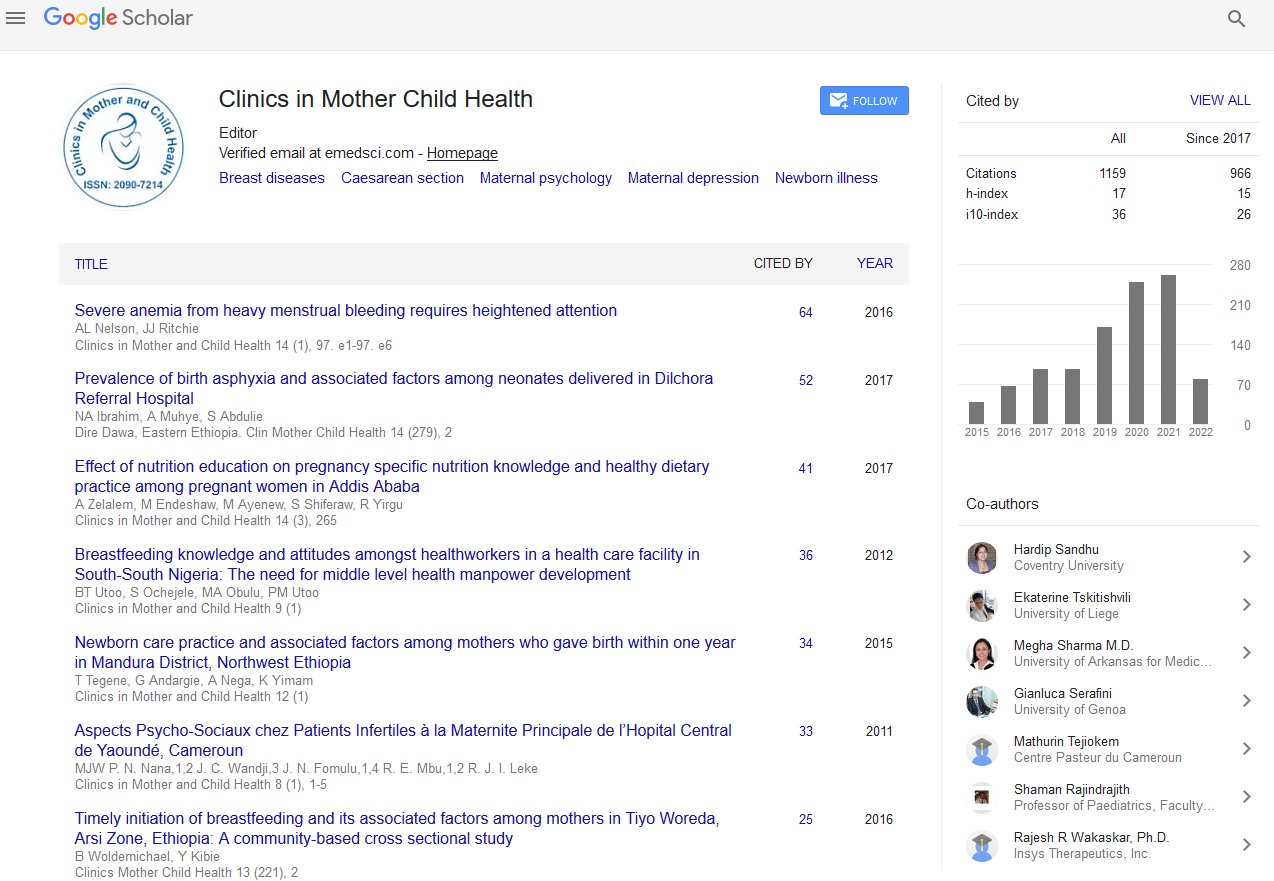Indexed In
- Genamics JournalSeek
- RefSeek
- Hamdard University
- EBSCO A-Z
- Publons
- Geneva Foundation for Medical Education and Research
- Euro Pub
- Google Scholar
Useful Links
Share This Page
Journal Flyer

Open Access Journals
- Agri and Aquaculture
- Biochemistry
- Bioinformatics & Systems Biology
- Business & Management
- Chemistry
- Clinical Sciences
- Engineering
- Food & Nutrition
- General Science
- Genetics & Molecular Biology
- Immunology & Microbiology
- Medical Sciences
- Neuroscience & Psychology
- Nursing & Health Care
- Pharmaceutical Sciences
Abstract
The Role Played by Salicylic Acid and Omega 3 in the Placental Vascular Resistance Mechanism: A Pilot Study
Alice Campos Batista, Barbara Caetano Ribeiro, Bia Drummond Paiva, LaÃ?Âs Mapa de Brito Fernandes, Luiza Cotta Xavier, Maria Paula Ferreira Arcuri, Clarissa Rocha Panconi, Alexander Cangussu Silva, Mariana Pinto Sirimarco, Larissa Milani Coutinho, PatrÃ?Âcia de Oliveira Lima, Gabriel Duque Pannain, Iasmin Dantas Sakr Khouri, Paula Silveira Mendes, Miralva Aurora GalvÃ?£o Carvalho, Paulo Henrique Barros Valente, Marcus Gomes Bastos and Juliana Barroso Zimmermmann*
Introduction: Doppler flowmetry of uterine arteries allows identifying women at risk of developing preeclampsia (PE), mainly early preeclampsia; it also facilitates the timely use of prophylaxis. Minidose Acetylsalicylic Acid (ASA) can help preventing/delaying preeclampsia development, as well as reducing its severity and the risk of complications. However, not all patients can use this medication; therefore, it is necessary finding clinical alternatives for pregnant women who do not tolerate ASA, as well as evaluating the possibility of increasing this prophylaxis with new drugsthe use of omega 3 is one of these alternatives. Thus, it is possible assuming that omega use by pregnant women could reduce the vascular resistance of uterine arteries and facilitate placentation. The aim of the current study is to evaluate uterine artery resistance and pulsatility indices, as well as bilateral notch in pregnant women presenting identifiable risk factor for PE development, who use omega 3 in association, or not, with ASA.
Methodology: The current research is a randomized-controlled, non-blind, parallel, two-arm, open-label preventive clinical trial. Patients were divided into two groups: group 1–use of ASA; and group 2-use of ASA+omega 3. Omegabased supplementations comprised doses of 400 mg/day in gelatin capsules, at DHA: EPA ratios 2.5:1 and 5.0:1.
Results: Patients’ mean age was 33.48+4.68 years. Mean pregnancies and childbirths were 1.93+1.30 and 0.59 ± 0.37, respectively. Results of uterine artery Doppler flowmetry were associated with omega and/or ASA use; patients who used ASA in association with omega (ASA+omega) recorded the highest uterine artery resistance and pulsatility indices – results were statistically significant. The comparison between ASA use in association, or not, with omega did not show difference in PE, prematurity, oligohydramnios, IUGR or hospitalization in neonatal ICU frequency. There were no cases of fetal death or Hellp Syndrome in either groups.
Conclusion: The omega 3 use in association with ASA has increased the uterine artery resistance and pulsatility indices of the investigated patients; however, it did not make any difference in primary and secondary outcomes.
Published Date: 2019-09-30; Received Date: 2019-09-13


